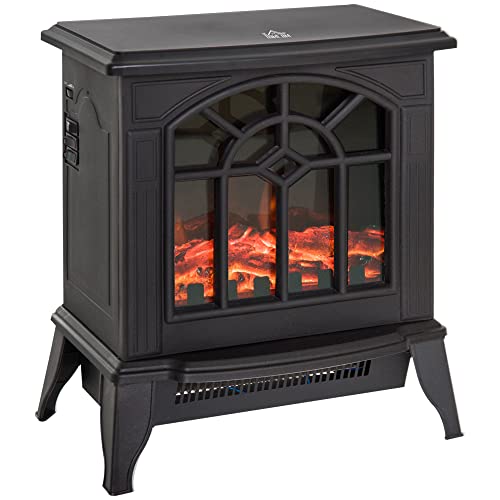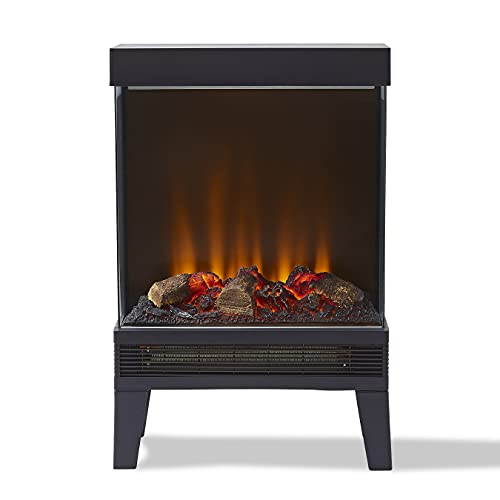The Benefits of an Ethanol Fireplace
ethanol Fire (
socialicus.com) fireplaces are a great alternative to wood or gas fires as they don't require an chimney or flue. They don't create smoke, ash, or mess and can easily be moved from one home to another.
Use bio-ethanol only on the burners designed to burn the fuel. The warranty of your burner could be invalidated in the event that you use other liquid fuels or gels.
Cost
The price of a fireplace made of bioethanol is contingent on the design and style you choose. There are models that range from a few hundred dollars to a few thousand dollars, but they are typically less expensive than a wood or gas fireplace. Some models are freestanding and others are attached to a fireplace or built into the wall. Ethanol fireplaces are also less polluting to the environment than wood-burning
wooden fireplaces.
Bioethanol fireplaces are a hit because they create a stunning flame that is free of soot and smoke. They can be used in almost any space, and are easy to maintain. It is recommended to only make use of bio-ethanol fuels that have been specifically made for these fireplaces. Other types of fuel could cause damage to the burner and increase the danger of fire. In addition, you should not keep flammable items near the bioethanol fire.
Ethanol fireplaces are fantastic to heat rooms, but they should not be used as your primary source of heat. They are much more efficient than wood-burning fireplaces and can generate a substantial amount of heat, around 2kW in average. This isn't enough to heat a whole house, but it will certainly assist in warming a small room.

You should also factor in the cost of maintaining an ethanol fireplace. The fireplace must be stored in a secure area, out of the reach of pets and children. Follow the manufacturer's directions when adding fuel, putting out the flame and let the heater cool.
A ethanol fireplace can be a great alternative to a stove that burns wood. The primary benefit of this fire is that it does not require a chimney, so you will save money on installation and
tabletop fireplace maintenance costs. Moreover, it is safer to use than many other types of fireplaces. It is a good idea to consult with an expert before making a decision. This means you can be certain that the fireplace will be set up safely and correctly.
Environmental impact
A fireplace that is ethanol-powered is an eco-friendly alternative to traditional wood-burning fireplaces. Bioethanol fuel is made from plant waste such as straw, maize, and corn. The biofuel's liquid is further distilled to enable it to burn efficiently and cleanly. This kind of fuel is an energy source that is renewable and does not emit harmful emission or odours. Additionally, it is free of soot and smoke which makes it a safer choice for your home over other kinds of fires.
Ethanol fireplaces do not require venting or chimneys, so they can be placed in almost any room in your house. The majority of models come with a remote control. Many models have an integrated cooling system to prevent the fuel from becoming too hot. They can be used as a primary source of heating or as an additional heating system. These are also good for people who live in apartments or in condos.
Bio-ethanol fireplaces emit low levels of smells. They are therefore an ideal choice for homes where people suffer from allergies or asthma. This kind of fireplace is safe to be used in a child's or nursery room. These fireplaces must be kept away from any flammable objects like curtains or furniture.
One of the biggest benefits of an ethanol fireplace is its ease of use. It is easier to set up than a fireplace that burns wood and doesn't require any complicated electrical wiring or installations. The liquid fuel can also be stored in a portable container to allow it to be easily moved from one area to another. This lets you enjoy the warmth of a fireplace without having deal with the mess of stacking, chopping and cleaning wood.
A bio-ethanol fireplace also produces very little pollution. This is a fantastic choice for those who are concerned about the environment. They also aid in saving energy and money.
Safety

A bioethanol fireplace is an alternative to open flame. They are simple to operate, generate less smoke and burn cleaner than other alternatives. As with all fireplaces, as well as other devices that create fire they could be dangerous if used improperly. These fireplaces need special care and attention, so be sure to read and follow the directions.
If you're using a bioethanol fire place make sure you place it in a place that is well ventilated and away from any other fire-prone materials. Also ensure that pets and children are kept away from it. Don't move it while the fire is still burning. This can cause an explosion.
Bio ethanol fireplaces aren't as dangerous as wood or gas fireplaces, however there are some safety guidelines that must be adhered to for a safe operation. For instance, keep flammable objects at least 1500mm away from the flame and not touching it when the flame is burning. It's also important to never add fuel to a fire that isn't approved.
The process of burning bio-ethanol is safe, so long as you follow the instructions. Fuel is pumped through a vapour-accelerator where it vaporizes and is then ignited by a filament. This method of combustion ensures that the fuel is fully combusted, which eliminates odour and harmful substances like dioxins and furans.
Ethanol fireplaces can be hazardous if not used properly and it is essential to follow the guidelines of the manufacturer when installing and operating them. Moreover, they should be kept clear from any combustible material, such as curtains and newspapers. They should be kept at a safe distance from other appliances in the household and should not be used in close proximity to children or animals that are sleeping.
The primary benefit of a bioethanol fireplace is that it doesn't release any harmful fumes or odours and is an ideal choice for families with children or pets. They are also more practical than traditional fireplaces, as they don't require chimneys and don't cause carbon monoxide poisoning. They offer a range of advantages, such as the ability to place them wherever you want and move them around.
Installation
A bioethanol fireplace is an excellent method to add ambiance and warmth to a space. They come in a variety of designs and can be set up using a variety of methods. They can be wall-mounted, built-in or freestanding, or even see-through. But, it is important to read the installation instructions of a particular
fireplace electric prior to installing it. This will help you avoid any issues during installation and ensure your fireplace is safe to use.
The process of installing a bioethanol fireplace is fairly easy. It involves installing the burner and constructing frames to be inserted into the wall. The frame should be constructed of an unflammable material. This will stop the flame from igniting the wall. This also helps prevent the flame spreading to other areas of the room. The frame should be secured to the wall using suitable screws and dowels.
The ethanol fireplace doesn't require a flue or chimney unlike other types of fireplaces. This makes them a more economical option for homeowners. They can also be put in any room and then easily moved. They do not release any harmful gases.
When used correctly When used properly, a bioethanol fire is extremely secure. However, just like all fires, they should be kept away from any surfaces that could ignite and children. The fuel should be stored in a safe location and the fire should be put out before refueling.
Ethanol fireplaces are simple to maintain and don't produce ash or soot. They are a great choice for those concerned about the effect on the environment of traditional wood-burning ones.